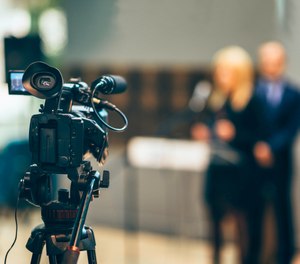One-on-one interviews with news media members offer an excellent opportunity for public information professionals to convey critical messages, shape public perception, and build strong relationships with journalists. Navigating these interviews successfully requires careful preparation, effective communication, and a clear understanding of your objectives. This article will explore essential strategies and best practices to help public information professionals excel in one-on-one interviews with the news media.
Research and Familiarize Yourself
Before the interview, conduct thorough research on the journalist conducting the interview, their outlet, and their
previous work. Understand their reporting style, areas of interest, and any potential biases. Familiarize yourself with recent news articles or interviews they have conducted related to your organization or industry. This knowledge will help you anticipate their questions and tailor your responses accordingly.
Define Your Key Messages
Identify the key messages you want to convey during the interview. Craft clear and concise talking points that align with your organization's objectives and core values. Prepare examples, anecdotes, or data to support your statements and ensure they resonate with the journalist and their audience.
Practice and Rehearse
Practice delivering your key messages concisely and confidently. Anticipate potential questions based on the journalist's previous work or recent news events. Rehearse your responses to ensure they are coherent, impactful, and aligned with your organization's messaging. Consider conducting mock interviews with a colleague or media trainer to simulate the experience.
Be Authentic and Transparent
Authenticity and transparency are essential when engaging with the news media. Present information accurately, avoid jargon or technical language and speak conversationally. If you don't know the answer to a question, be honest and offer to follow up with the necessary information promptly. Avoid speculation or providing information outside your area of expertise.
Active Listening and Bridge Statements
During the interview, actively listen to the journalist's questions and respond thoughtfully. If a question steers the conversation away from your key messages or touches on sensitive topics, use bridge statements to navigate back to your main talking points. For example, you can say, "That's an important perspective, but what's crucial to note is..." or "While I can't comment on specific details, what I can tell you is..."
Body Language and Non-Verbal Cues
Pay attention to your body language during the interview. Maintain good posture, eye contact with the journalist, and use natural gestures to convey confidence and engagement. Be mindful of facial expressions and avoid defensive or confrontational body language, which can detract from your message.
Stay on Message
While engaging in a conversation with the journalist is essential, always ensure you steer the conversation back to your key messages. Use bridging techniques, anecdotes, or data to reinforce your points and maintain control over the interview's direction. Remember that you are representing your organization and its objectives.
Handle Difficult Questions with Grace
Inevitably, you may encounter challenging or confrontational questions during the interview. Remain calm, and composed, and refrain from becoming defensive. Instead, address the underlying concern or sentiment behind the question and redirect the conversation to your key messages. Responding professionally and respectfully can help maintain credibility and control the narrative.
Follow-Up and Relationship Building
After the interview, follow up with the journalist to express your gratitude for the opportunity to speak with them. If there were any unanswered questions or points you promised to address, ensure you provide the necessary information promptly. Building and nurturing relationships with journalists over time can lead to more favorable coverage and future interview opportunities.
Mastering the one-on-one interview is a crucial skill for public information professionals. By conducting thorough research, defining key messages, practicing and rehearsing, being authentic and transparent, utilizing bridge statements, maintaining positive body language, staying on message, handling difficult questions gracefully, and following up, public information professionals can successfully navigate one-on-one interviews with the news media.
Remember, one-on-one interviews provide a platform to shape public perception, convey key messages, and build relationships with journalists. By employing these strategies and best practices, you can ensure that your organization's voice is effectively communicated and your objectives are achieved during these critical interactions.
Mastering the art of the one-on-one interview requires preparation, adaptability, and practical communication skills. With practice and experience, public information professionals can become adept at engaging with the news media, effectively representing their organizations, and fostering positive relationships that can yield long-term benefits in terms of public trust and understanding.
Embrace the opportunity that one-on-one interviews present, and view them as a chance to inform, educate, and engage with the public through the news media. By approaching these interviews with confidence, authenticity, and a clear focus on your key messages, you can make a significant impact and contribute to the success of your organization's communication efforts.

Comments
Post a Comment